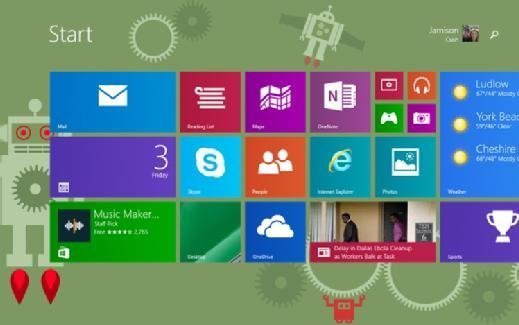ABOUT WINDOWS : 10
ABOUT WINDOWS : 10
Windows 10 is a Microsoft operating system for personal computers, tablets, embedded devices and internet of things devices.
Microsoft released Windows 10 in July 2015 as a follow-up to Windows 8. The company has said it will update Windows 10 continuously, rather than release a new, full-fledged operating system as a successor.
Anyone adopting Windows 10 can upgrade legacy machines directly from Windows 7 or Windows 8 to Windows 10 without re-imaging or performing intrusive and time-consuming system wipes and upgrade procedures. To upgrade from a previous version of Windows 10, IT or users run the Windows 10 OS installer, which transfers any applications and software on the previous OS, as well as settings and preferences over to Windows 10. Organizations and users can pick and choose how they will patch and update Windows 10. IT or users can access a Windows 10 upgrade through the Windows Update Assistant to manually begin an upgrade or wait for Windows Update to offer an upgrade when it is set to run.
Windows 10 features built-in capabilities that allow corporate IT departments to use mobile device management (MDM) software to secure and control devices running the operating system. In addition, organizations can use traditional desktop management software such as Microsoft System Center Configuration Manager.
Windows 10 Mobile is a version of the operating system Microsoft designed specifically for smartphones.
Windows 10 features
The familiar Start Menu, which Microsoft replaced with Live Tiles in Windows 8, returned in Windows 10. Users can still access Live Tiles and the touch-centric Metro interface from a panel on the right side of the Start Menu, however.
Microsoft Windows 10 Continuum allows users to toggle between touchscreen and keyboard interfaces on devices that offer both. Continuum automatically detects the presence of a keyboard and orients the interface to match.
Windows 10's integrated search feature allows users to search all local locations, as well as the web simultaneously.
Microsoft Edge debuted with Windows 10 and replaces Internet Explorer as the default web browser. Edge includes tools such as Web Notes, which allows users to mark up web sites, and Reading View, which allows users to view certain websites without the clutter of ads. The browser integrates directly with Cortana, Microsoft's digital assistant, which is also embedded within Windows 10.
Cortana integrates directly with the Bing search engine and supports both text and voice input. It tracks and analyzes location services, communication history, email and text messages, speech and input personalization, services and applications, and browsing and search history in an effort to customize the OS experience to best suit users' needs. IT professionals can disable Cortana and some of its features with Group Policy settings.
Windows 10 security
Microsoft Windows 10 integrated support for multifactor authentication technologies, such as smartcards and tokens. In addition, Windows Hello brought biometric authentication to Windows 10, allowing users to log in with a fingerprint scan, iris scan or facial recognition technology.
The operating system also includes virtualization-based security tools such as Isolated User Mode, Windows Defender Device Guard and Windows Defender Credential Guard. These Windows 10 features keep data, processes and user credentials isolated in an attempt to limit the damage from any attacks.
Windows 10 also expanded support for BitLocker encryption to protect data in motion between users' devices, storage hardware, emails and cloud services.
Windows 10 system requirements
The minimum Windows 10 hardware requirements for a PC or 2-in-1 device are:
Processor: 1 gigahertz (GHz) or faster processor or system-on-a-chip (SoC)
RAM: 1 gigabyte (GB) for 32-bit or 2 GB for 64-bit
Hard disk space: 16 GB for 32-bit OS 20 GB for 64-bit OS
Graphics card: DirectX 9 or later with Windows Display Driver Model 1.0
Display: 800x600
The minimum Windows 10 Mobile hardware requirements for a smartphone are 1 GB RAM, 8 GB flash storage, a Trusted Platform Module, Unified Extensible Firmware Interface, 32 bits of color per pixel, and 720p screen resolution. Smartphones also require a Snapdragon SoC from Qualcomm Technologies.
Windows 10 upgrades
IT professionals and end users have two options to upgrade from Windows 7 or 8.1 to Windows 10. One is by installing and running the Get Windows 10 application. The other is to use an image file with a designated group of settings and applications to upgrade to Windows 10.
THANKS
BLOG : ANURAG SHUKLA

Comments
Post a Comment